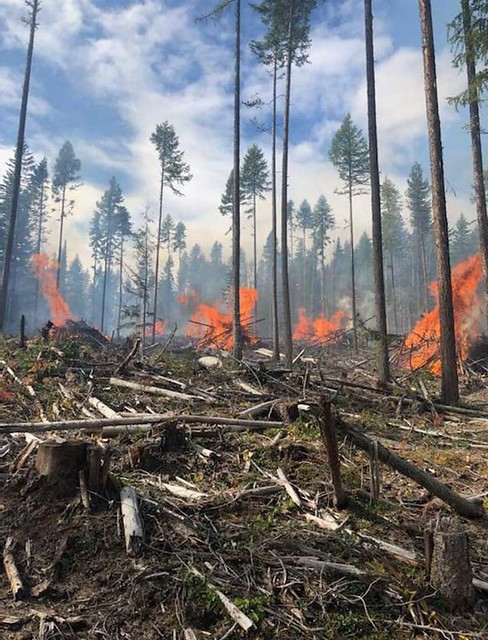
An opaque, autumn haze smothers much of the western United States from the millions of acres burning across forests in the Sierra Nevada and Rocky Mountains. Fire size and severity are rising in tandem with record heat, low winter snowpack, decreased summer rains, and abundant forest fuels. Wildfires in the West doubled in total size between 2000-2015 compared to the previous 15 years, burning an average 6.8 million acres annually in the last decade. This trend has wide-ranging consequences on the health and productivity of our national forests, our drinking water supplies, and wildlife habitat.
That’s why the U.S. Chapter of 1t.org (us.1t.org), launched today, and supported by the USDA Forest Service, will enhance the long-term resilience of national forests by planting trees and restoring ecosystems over the next 10 years. Planting trees after catastrophic wildfire is becoming increasingly more important to the sustainability of our forests, especially in areas where wildfire wipes out entire stands and the seed source necessary to forests’ natural regrowth.
The USDA Forest Service manages national forests using a variety of active management techniques to increase resource resilience while sustaining the many benefits and services wildlife and people need and enjoy. Healthy forests support natural stream systems and watersheds, filtering drinking water for 180 million Americans. Our national forests are an important source of rural prosperity, providing forest industry jobs to more than 2.5 million Americans. Wildlife thrives in our national forests.
In areas where we have lost forests to fire, the trillion trees platform provides an opportunity to accelerate the renewal or reproduction of forest benefits, like carbon sequestration and clean water, over natural rates by tapping the expertise and resources of our many partnership groups and other state and local agencies. Currently, the USDA Forest Service has opportunities to increase reforestation rates on 1.3 million acres of national forests, including 700,000 acres of tree planting and 600,000 acres of activities to ensure successful natural regeneration.
Current active forest management techniques, to regenerate, replace, and grow more resilient forests in the future, reduce the likelihood of severe wildfire. By using novel planting techniques we can create forests with more resilience to future wildfires.
The USDA Forest Service is protecting lives and property in forest adjacent communities, with timber harvests, reducing high fuel risk stands, and hazardous fuel treatments, including mechanical thinning and prescribed burning. Our primary tools to address these risks are reducing the amount of hazardous fuels and limiting the number of healthy trees on specified terrain. Hazardous fuel treatments on national forests protect roughly 60 million to 200 million trees per year from wildfire. This year, the USDA Forest Service plans to treat 3.5 million acres of hazardous fuels.
With the momentum of trillion trees platform, it is evident how active forest management can ensure sustainable and resilient forests will endure for future generations.

